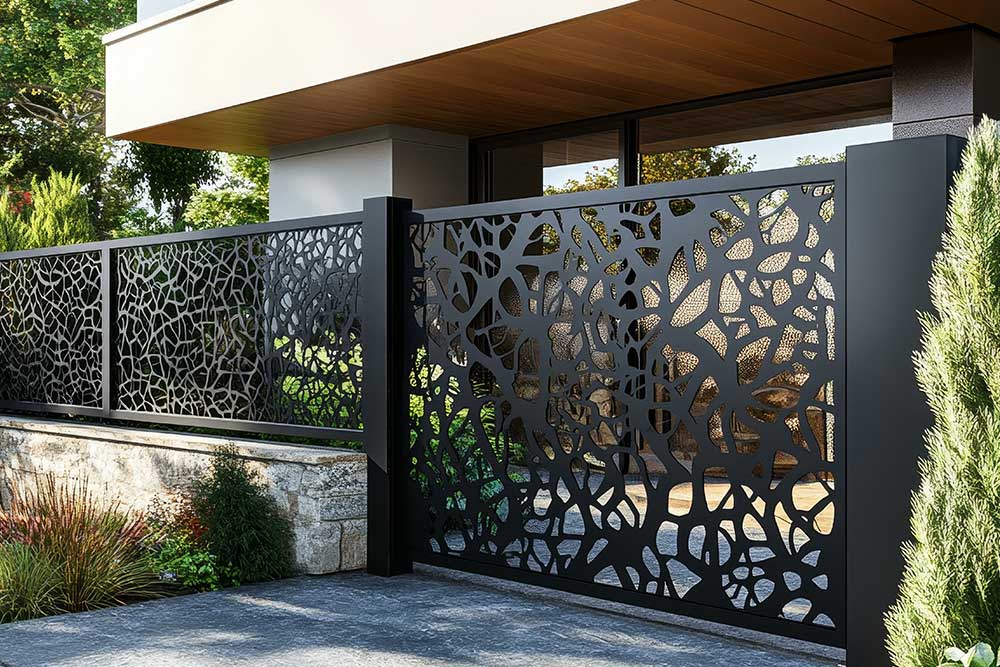How to Incorporate Industrial Design into Your Home
How to Incorporate Industrial Design into Your Home industrial design has become a popular style in both commercial and residential spaces in recent years. Known for its raw, unfinished aesthetic and the use of materials like metal, wood, and concrete, industrial interior design brings a unique blend of ruggedness and modernity to any environment. While originally associated with repurposed warehouses and factories, this design style has transitioned seamlessly into homes, offering an edgy yet functional approach to interior decoration. Here’s how to incorporate industrial interior design into your home, creating a space that is both stylish and practical.

Understanding Industrial Interior Design
Before diving into specific tips and tricks, it’s essential to understand what defines industrial interior design. This style emphasizes an open, airy feel with minimal decoration, focusing instead on the beauty of raw materials and exposed elements. Think of large metal beams, unfinished wooden floors, open brick walls, and large windows that let in natural light. The style also incorporates vintage or reclaimed furniture and lighting, offering a rustic, utilitarian charm.
The industrial look often embraces imperfections, where the visible wear and tear of furniture or structural elements adds character to the space. It’s not about perfect symmetry or polished surfaces but rather about highlighting the beauty in practicality and function.
Key Elements of Industrial Design in Your Home
Incorporating industrial interior design into your home doesn’t mean transforming your space into a replica of a factory. It’s about blending the raw, rugged elements of industrial style with the comfort and warmth of residential living. Below are the key elements to consider when bringing this style into your home.
1. Exposed Brick and Concrete
One of the hallmark features of industrial interior design is the use of exposed brick and concrete. These elements give the space an unfinished, almost utilitarian vibe that is characteristic of industrial spaces. In your home, consider exposing existing brick walls or using concrete for floors or countertops to create a cohesive industrial feel.
If exposing original brick isn’t feasible, you can achieve a similar effect with brick wallpaper or concrete-inspired finishes. Concrete floors or walls add a sleek, modern touch while maintaining the raw, industrial look.
2. Utilization of Metal and Steel
Metal is another essential material in industrial interior design. Steel, iron, and brass are commonly used for furniture, light fixtures, and structural elements. For example, a steel-framed bed or shelving unit can become a statement piece in your bedroom or living room. Large, metal pendant lights hanging from the ceiling, or even exposed steel pipes used in plumbing or railings, contribute to the industrial aesthetic.
Furniture that features a combination of wood and metal is also a great way to incorporate industrial design. A coffee table with a reclaimed wood top and steel legs, or a bookshelf with metal supports, can immediately enhance the industrial atmosphere in your home.
3. Open and Airy Spaces
Industrial style thrives in open spaces. Large windows, high ceilings, and an open floor plan are typical features of industrial interior design. The aim is to create a sense of freedom and expansiveness, so think about removing unnecessary walls or partitions to open up your living space.
If your home doesn’t have high ceilings, you can still achieve the open, airy feeling by using light colors for walls and ceilings, and installing large windows or glass doors that invite natural light. The more light you can bring into the space, the better, as it enhances the raw beauty of industrial elements like concrete and metal.
4. Vintage and Reclaimed Furniture
One of the best ways to achieve an industrial look is by incorporating vintage or reclaimed furniture into your space. Recycled furniture pieces, such as an old factory cart used as a coffee table or a distressed leather armchair, bring an authentic industrial vibe to the home. Vintage items add character, helping the space feel lived-in and unique.
Antique lighting fixtures, metal filing cabinets, or industrial-style office desks are also great additions. For those on a budget, thrift stores and flea markets can be excellent resources for finding authentic vintage furniture that will elevate your space with an industrial edge.
5. Minimalist and Functional Accessories
Accessories in industrial interior design are typically minimalistic and practical. Think about incorporating functional elements that also serve as design statements. For instance, a large clock with metal gears, exposed lightbulbs in vintage-style pendant lights, or metal wire baskets for storage can all enhance the industrial look.
Keep the color palette simple and neutral—black, gray, white, and earthy tones dominate the industrial style. Avoid overly ornate decorations, focusing instead on streamlined, functional pieces that align with the industrial theme.
6. Warmth through Textiles
While industrial interior design is often associated with cold, hard surfaces, warmth can be brought into the space through textiles. Soft fabrics such as wool, linen, or velvet help balance out the harsher elements like concrete and steel. Consider adding cozy throw pillows, wool blankets, and area rugs to soften the space.
Leather upholstery is another great way to introduce warmth while staying true to the industrial aesthetic. A leather sofa or armchair can make a bold statement, adding both comfort and a rugged edge to the room.
7. Lighting That Reflects the Industrial Vibe
Lighting plays a pivotal role in industrial interior design, as it highlights the raw beauty of the materials used throughout the space. To create the right atmosphere, opt for large pendant lights, Edison bulbs, or metal sconces that provide both function and style.
A statement chandelier made of metal pipes or a vintage-style lamp can also act as a focal point in the room. Industrial lighting typically features exposed bulbs, emphasizing the simplicity and utility of the design.
8. Incorporating Modern Elements
Although industrial interior design is rooted in the past, it’s not limited to vintage or reclaimed elements. Mixing industrial pieces with more modern furnishings can create a balanced, contemporary atmosphere. Pair a metal-framed couch with a minimalist glass coffee table or complement exposed brick walls with sleek, modern artwork.
By blending the old with the new, you can create a dynamic, multidimensional space that feels both timeless and fresh. Modern elements also serve to soften the more rigid aspects of industrial design, making the space feel more inviting and livable.
9. Use of Large-Scale Art and Decor
In an industrial-inspired home, larger artwork and décor items are often favored. Large abstract paintings or metal sculptures can add drama to the walls and create a bold statement in the room. Oversized mirrors framed in metal, or vintage posters with distressed edges, can further enhance the industrial look.
When it comes to décor, choose pieces that complement the overall aesthetic of raw materials and simplicity. Keep the focus on clean lines, natural textures, and minimalist design.
Tips for Successfully Implementing Industrial Design
- Start with the Structure: If you’re in the process of renovating or designing your space from scratch, start with the raw elements. Exposed brick walls, steel beams, or concrete floors should be prioritized to set the foundation for the industrial style.
- Mix Materials: While industrial design favors raw, unfinished materials, don’t shy away from mixing these elements with softer, more refined pieces. Balancing steel with wood or leather can create an inviting yet rugged aesthetic.
- Layer Textures: Layering different textures—rough concrete, smooth leather, soft wool—creates depth and visual interest. This helps prevent the space from feeling too sterile or overly industrial.
- Consider Functionality: As with any design style, functionality should always be a priority. While industrial style may lean toward raw, utilitarian elements, it’s important to ensure that your home remains comfortable and livable.
Crafting a Home with Industrial Flair
Incorporating industrial interior design into your home allows you to embrace a style that is both bold and functional. By focusing on raw materials, open spaces, vintage furniture, and minimalist décor, you can create an environment that feels both modern and timeless. Whether you’re renovating an old factory building or simply looking to add industrial touches to your existing home, the key is to embrace the beauty of imperfection and create a space that reflects your personal taste and lifestyle. With the right combination of elements, you can transform your home into a stunning industrial haven.






